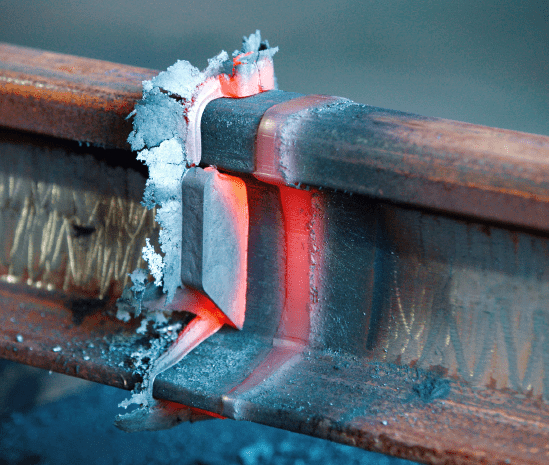Welding WPS Explained: Key Parts and Advantages for Your Welding Procedures
Welding WPS Explained: Key Parts and Advantages for Your Welding Procedures
Blog Article
Achieving Welding Excellence: Introducing the Secrets of WPS Implementation and Optimization
In the realm of welding, attaining quality is a quest that depends upon the thorough implementation and optimization of Welding Treatment Specifications (WPS) These fundamental papers serve as the foundation of welding operations, determining the treatments and criteria required for generating premium welds consistently. Nevertheless, the secrets to unlocking the complete potential of WPS exist not just in understanding its value but likewise in understanding the intricacies of its execution and optimization. By delving into the vital elements, methods, challenges, and best techniques connected with WPS, a world of welding quality awaits those who agree to explore its depths.
Value of WPS in Welding
The Value of Welding Procedure Requirements (WPS) in the welding market can not be overemphasized, functioning as the backbone for guaranteeing consistency, high quality, and security in welding operations. A WPS gives comprehensive guidelines on just how welding is to be brought out, including important variables such as materials, welding processes, joint style, filler steels, interpass and preheat temperature levels, welding currents, voltages, traveling rates, and extra. By adhering to a well-defined WPS, welders can preserve uniformity in their work, resulting in constant weld high quality across different jobs.

Crucial Element of WPS
Reviewing the essential components of a welding treatment requirements (WPS) is necessary for understanding its function in welding operations. A comprehensive WPS includes several vital elements that assist welders in accomplishing high quality and uniformity in their work. One essential element of a WPS is the welding procedure requirements, which lays out the specific welding processes to be utilized, such as gas tungsten arc welding (GTAW) or secured metal arc welding (SMAW) Furthermore, the WPS includes information on the welding materials, such as the type and specs of the base metal and filler metal to be utilized. The WPS likewise defines important variables like welding specifications, preheat and interpass temperature requirements, and post-weld heat therapy procedures. In addition, it consists of info on joint layout, fit-up, and any kind of special strategies or precautions necessary for the welding operation. By incorporating these crucial elements right into the WPS, welding procedures can be standardized, making certain high quality, effectiveness, and security in welding procedures.
Strategies for WPS Optimization

Secondly, training and credentials of welding personnel according to the details requirements of the WPS is vital. Providing thorough training programs and making sure that welders are certified to perform procedures outlined in the WPS can result in better welds and reduced rework.
In addition, leveraging technology such as welding software application and tracking systems can help in maximizing WPS. These tools can help in monitoring variables, ensuring specifications are within defined limitations, and giving real-time responses to welders, allowing them to make prompt adjustments for improved weld quality.
Common Obstacles and Solutions
Dealing with challenges in implementing the methods for WPS optimization can impede welding operations' effectiveness and top quality. One typical difficulty is inadequate training or understanding of the welding procedure requirements (WPS) Look At This among the welding team. This can lead to incorrect implementation of welds, leading to issues and revamp. To address this, extensive training programs must be implemented to guarantee that all welders excel in translating and using WPS properly.
Another difficulty is the lack of appropriate documents and record-keeping, which is essential for WPS optimization. Without clear documents of welding criteria, materials utilized, and examination outcomes, it comes to be tough to recognize locations for improvement and make sure consistency in welding procedures. Applying a robust documentation system, such as electronic welding monitoring software application, can aid enhance record-keeping and help with data evaluation for constant improvement.
Additionally, irregular welding tools calibration and upkeep can pose a substantial challenge to WPS optimization. Routine tools checks, calibration, and maintenance routines should be you could try this out abided by purely to ensure that welding specifications are accurately controlled and kept within the defined resistances (welding WPS). By dealing with these typical difficulties with positive solutions, welding operations can boost performance, top quality, and total welding quality
Ideal Practices for WPS Implementation
To make sure successful WPS application in welding procedures, adherence to sector criteria and precise attention to information are paramount. When starting WPS execution, it is crucial to start by thoroughly comprehending the specific welding needs of the task. This involves a detailed evaluation of the welding treatment specifications, materials to be bonded, and the environmental conditions in which the welding will take location.
As soon as the demands are clear, the next action is to choose the appropriate welding procedure that lines up with these specifications. This involves getting in touch with the relevant codes and requirements, such as those supplied by the American Welding Society (AWS) or the International Company for Standardization (ISO), to guarantee conformity and high quality.
In addition, recording the whole WPS execution procedure is vital for traceability and high quality control. Thorough records ought to be maintained pertaining to welding parameters, material prep work, preheat and interpass temperature levels, welding consumables utilized, and any kind of discrepancies from the initial treatment. Routine audits and reviews of the WPS can aid recognize locations for renovation and make certain recurring optimization of the welding process.


Verdict
Finally, the implementation and optimization of Welding Treatment Requirements (WPS) is vital for achieving welding quality. By comprehending the crucial elements of WPS, carrying out effective techniques for optimization, addressing common challenges, and following finest techniques, welders can make certain high-grade welds and secure working conditions. It is important for specialists in the welding industry to focus on the appropriate implementation of WPS to improve total welding performance and achieve wanted end results.
The Importance of Welding Treatment Specifications (WPS) in the welding industry can not be overemphasized, offering as the foundation for making certain consistency, top quality, and security in welding procedures. A WPS gives comprehensive guidelines on how welding is to be lugged out, including essential variables such as materials, welding processes, joint layout, filler metals, interpass and preheat temperature levels, welding currents, voltages, travel rates, and a lot more. One critical element of a WPS is the welding process specification, which lays out the details welding processes to be made use of, such as gas tungsten arc welding (GTAW) or protected metal arc welding (SMAW) By integrating these key aspects into the WPS, welding procedures can be standardized, making certain quality, effectiveness, you can look here and safety in welding procedures.
It is critical for professionals in the welding market to focus on the proper execution of WPS to improve overall welding efficiency and attain desired outcomes.
Report this page